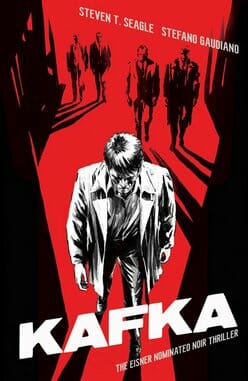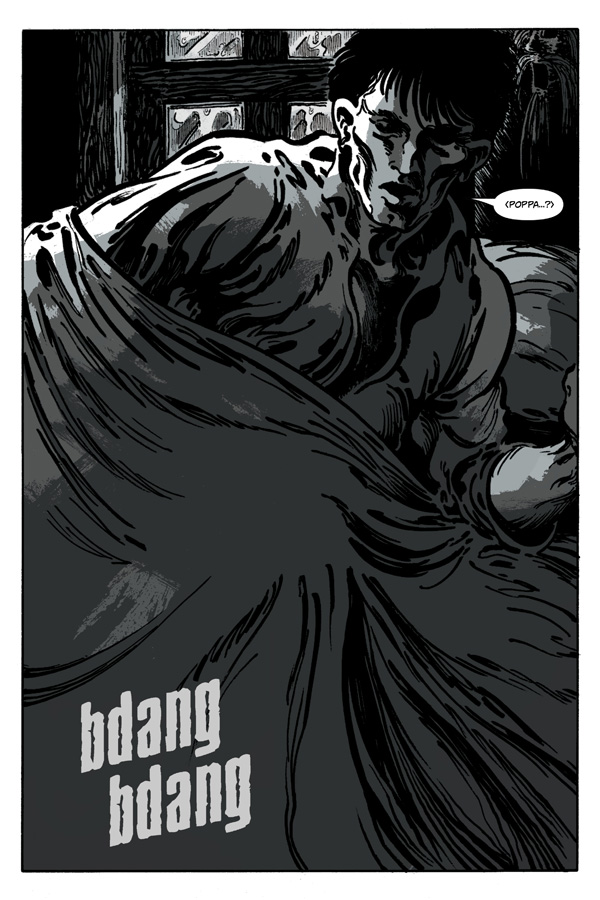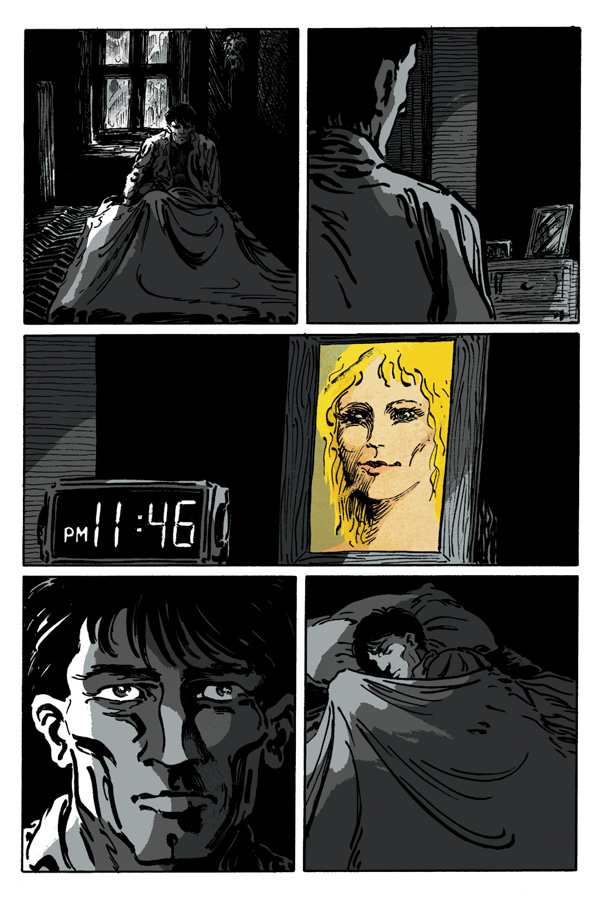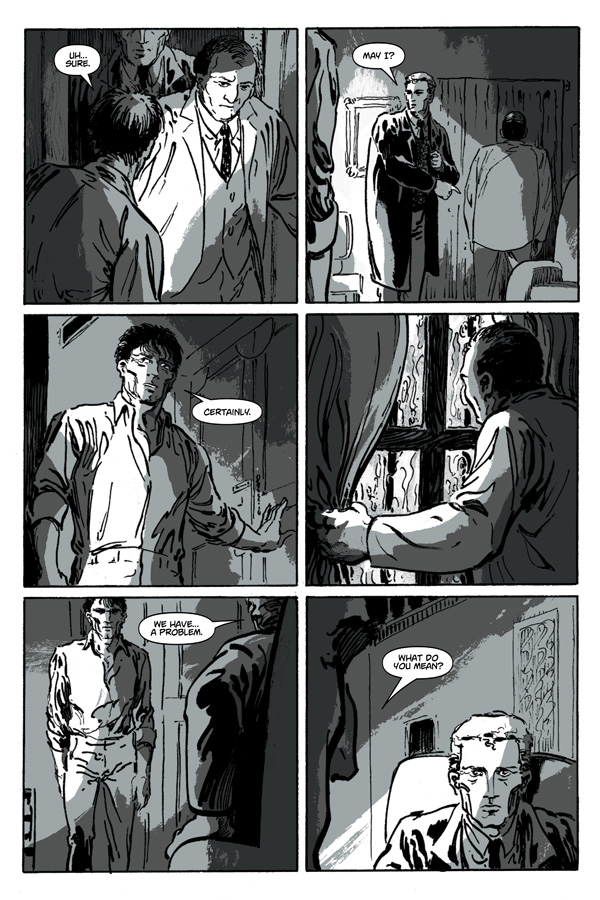Kafka by Steven T. Seagle & Stefano Gaudiano

Writer: Steven T. Seagle
Artist: Stefano Gaudiano
Publisher: Image
Release Date: July 17, 2013
This latest printing of Steve T. Seagle’s limited-edition noir comic originally published in the late ‘80s by Renegade Press is its fourth incarnation total, as one can glean from the page of acknowledgments that thanks the folks responsible for each iteration. Now it’s Image’s turn, and the publisher has added something new: color. Kafka is well known for being part of the indie black-and-white (a.k.a., cheapo) trend of the era, but its creators were happy to have the opportunity to add hue and tint to their book. Unfortunately, doing so has created some problems.
The book’s creators claim the story has nothing to do with the writer Franz Kafka, despite repeated references to a “trial,” a sense of surrealistic persecution by an unnamed state apparatus, and an important character named Beckett (shades of Samuel, another modernist writer with similar preoccupations). Instead, Seagle supposedly came across the word as Polish slang spoken in concentration camps that was used to describe someone taken in the night. His hero, Daniel Hutton, has repeated flashbacks to his own time in such a camp, though the timeline doesn’t quite seem to work. In the present day, Hutton finds himself pursued by shadowy men as he tries to get back to his wife, in what is indeed a somewhat Kafka-esque scenario. Despite Seagle’s desire to get away from traditional comic book stories, Hutton does possess a mind-control superpower, and the narrative as a whole is fairly traditional, albeit revealed in a fragmented fashion punctuated by numerous flashbacks. It’s these dreams and recollections of the past that receive the new color treatment in this edition.



